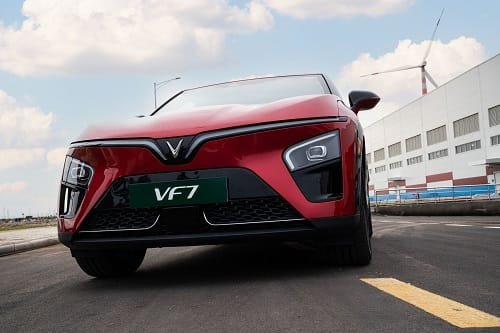India’s City Growth Set Stage for VinFast Advance

In a positive signal for the electric vehicle revolution, India’s public EV charging network has grown nearly fivefold since 2022. A lot of that growth is in its largest cities, where charging hubs are starting to become part of the urban landscape. While electric four-wheeler adoption remains in the single digits, the conditions in dense metro areas are shifting.
 |
India’s major cities are emerging as key hubs for EV adoption, with growing infrastructure and policies drawing global automakers such as VinFast
Policy support, shorter daily travel distances, and a young consumer base are creating an environment where demand could build quickly. Brands in Indian, both old and new, including the Vietnamese EV upstart VinFast, are gearing up to fully take advantage of this momentum.
Cities at the Center of EV Readiness
In the race for EV adoption, India’s cities play a leading role due to their unique characteristics.
In 2024, 37 percent of India’s people lived in cities- and this share is expected to rise- concentrating significant income, infrastructure, and vehicle demand, as well as higher levels of traffic pollution that must be addressed. At the same time, most urban commuters travel less than 35 kilometers a day, a distance that is well within the range of most EVs already on the market.
Local policies are starting to lock in long-term support. Delhi’s EV plan requires that one in five parking spaces in new residential buildings be equipped for a charger. That kind of mandate makes EVs more appealing to both early adopters and mass consumers, helping them see the vehicles as practical rather than merely aspirational.
Charging growth has been rapid. By April 2025, India had 26,367 public charging points, compared with about 5,000 in 2022. Many are installed in shopping malls, office complexes, and along highways, giving drivers options for both daily charging and longer trips.
A Policy Push Toward Electric
National regulators are working to improve the economics of owning an EV. One proposed change would exempt them from the 15-year “End of Life” rule, which currently forces older vehicles off the road. Extending an EV’s legal usable life could boost its resale value and make financing easier.
State governments add their own incentives. Delhi is proposing to once again remove road tax and registration fees for EVs. Maharashtra offers early purchase subsidies of up to â¹2 lakh for electric cars. Tamil Nadu provides capital subsidies to EV manufacturers to attract new factories. Financing reforms are also on the table. The government has reportedly met with banks to address their reluctance to finance EVs and their concerns over high interest rates, addressing a common hurdle for buyers.
Policy focus is not spread evenly. Initiatives from NITI Aayog and various states concentrate on cities and sectors most ready for adoption, such as fleet operators and corporate users. The aim is to build momentum where infrastructure and consumer interest already align.
A New Player Positions Itself
To ensure a seamless ownership experience, VinFast has signed agreements with multiple dealer partners to set up 32 dealerships across 27 cities, forming a robust 3S (Sales, Service, Spares) ecosystem, with a total of 35 expected by year’s end. The initial network will cover key urban and emerging EV markets, including Delhi, Gurugram, Noida, Chennai, Bengaluru, Hyderabad, Pune.
This urban push is part of VinFast’s broader strategy to build a full EV ecosystem in India-combining a nationwide dealership network, integrated after-sales and service centers, and battery recycling partnerships. The company has joined forces with RoadGrid, myTVS, and Global Assure to create a nationwide charging and service network with real-time charging access, AI-driven diagnostics, and integrated digital platforms.
Just early August, the Vietnamese automaker also opened its first overseas EV assembly plant in Thoothukudi, Tamil Nadu. Built on a 400-acre industrial site, the plant represents a USD 500 million commitment in its initial phase. Annual capacity is set at 50,000 vehicles, with the possibility to scale to 150,000. The first models built will be the premium VF 6 and VF 7 SUVs.
Construction took nearly half a year, faster than the company’s first plant in Vietnam. The facility currently assembles vehicles from imported components but will expand into local parts production. Plans include a supplier park and eventually full manufacturing on site.
The plant is expected to create 3,000 to 3,500 jobs, most filled by workers from nearby districts. Tamil Nadu’s port and airport access, combined with its skilled labor pool, were key factors in the site selection. VinFast also intends to use the factory as an export hub for South Asia, the Middle East, and Africa, with orders already coming in from Sri Lanka, Nepal, and Mauritius.
India’s EV market is still in its early stages, but its largest cities are laying the groundwork for faster adoption. Automakers willing to invest now, build locally, and align with policy priorities could see the payoff in the years ahead. VinFast is placing its bet that it will be one of them.
![]()